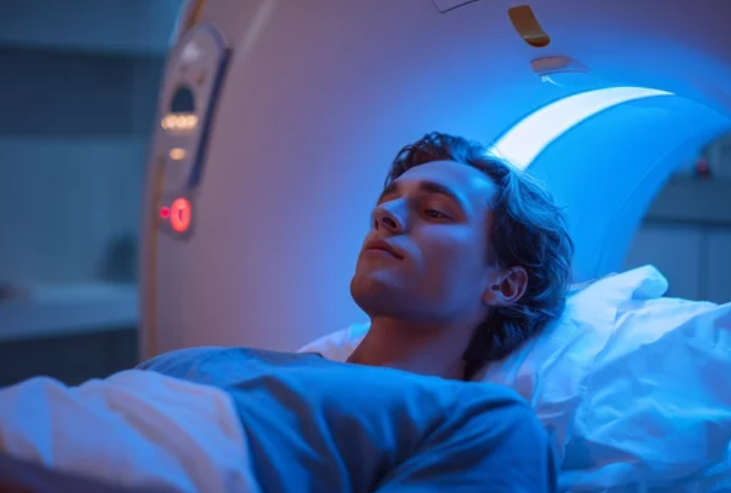Magnetic Resonance Imaging (MRI) is changing how doctors diagnose and treat many medical conditions. It offers detailed images that help reveal problems earlier and more clearly than before. By improving the quality and speed of imaging, MRI is helping doctors tailor treatment plans more precisely to each patient’s needs.
New MRI technologies, including smarter imaging protocols and artificial intelligence, are making scans quicker and more accurate. This means less waiting time and better information for doctors to make decisions. MRI is also becoming crucial in fields like cancer care, where it tracks how tumors respond to treatment in real time.
As MRI continues to advance, it will shape future medical guidelines and therapy plans. This will improve outcomes by making both diagnosis and treatment more effective and personalized.
Key Takeaways
- MRI offers more detailed images for earlier and clearer diagnosis.
- New MRI tech speeds up scans and improves accuracy.
- MRI helps customize treatments based on how patients respond.
MRI Advancements Transforming Diagnostics
MRI technology has made significant improvements in image quality, detection speed, and functional analysis. These changes help doctors see smaller details, catch diseases sooner, and study how organs work in real time.
Enhanced Imaging Resolution and Clarity
New MRI machines produce higher-resolution images that show finer details inside the body. Advances in hardware like stronger magnets and better coils improve signal quality. Software improvements also allow clearer images with less noise or blur.
This clarity helps radiologists identify subtle abnormalities that were once hard to detect. Tumors, lesions, and tissue changes become easier to spot. As a result, doctors can make more accurate diagnoses and plan treatments with confidence.
Early Disease Detection
MRI advances enable the detection of diseases in their earliest stages. High-resolution imaging and specialized techniques like diffusion-weighted imaging highlight changes in tissues before symptoms develop.
This early detection is critical for illnesses such as cancer, neurological disorders, and cardiovascular diseases. The ability to identify problems sooner leads to faster intervention, which can improve patient outcomes and reduce the need for invasive procedures.
Functional MRI and Real-Time Monitoring
Functional MRI (fMRI) measures brain activity by tracking blood flow changes. Recent improvements allow more precise mapping of brain functions. This helps in planning surgeries, especially for brain tumors or epilepsy.
Real-time monitoring through MRI now supports treatment adjustments. For example, MRI-guided therapies can track how tissues respond to drugs or radiation. This approach enables personalized treatment, adapting protocols to each patient’s needs during care.
Impacts of MRI on Treatment Protocols
MRI improves treatment by offering precise images that help tailor care, guide procedures, and reduce the need for invasive tests. It supports better decisions and safer interventions through clear, real-time views of tissues and organs.
Personalized Treatment Planning
MRI gives detailed images of tumors, organs, and surrounding tissue that help customize treatment for each patient. It allows doctors to see exact tumor size and location, which helps in planning radiation or surgery with high accuracy.
Quantitative MRI techniques provide data on tumor behavior, helping adjust therapy as treatment progresses. This leads to more effective treatments tailored to how the tumor changes.
Tools like MRI-linear accelerators combine imaging with treatment delivery. They allow real-time adjustments during radiation, improving targeting and reducing damage to healthy tissue.
Minimally Invasive Intervention Guidance
MRI guides many minimally invasive procedures by showing clear views of the internal body in real time. This helps doctors place instruments accurately during biopsies, ablations, or injections without open surgery.
MRI offers better soft tissue contrast than other imaging methods. This ability reduces risks by avoiding critical structures during interventions.
The combination of MRI with treatment devices, like MR-guided focused ultrasound, allows non-invasive therapy to treat tumors or lesions without incisions. This reduces recovery time and complications.
Reducing the Need for Exploratory Procedures
MRI can often replace exploratory surgeries by providing detailed diagnostic images non-invasively. Clear visualization of anatomy and pathology reduces the need for procedures done just to confirm diagnosis.
For example, MRI can detect and characterize abnoMRI rmalities in organs like the liver or kidneys, helping decide treatment without biopsy.
Advanced MRI sequences reduce motion artifacts and improve image quality in challenging areas. This increases diagnostic confidence and cuts down unnecessary invasive tests.
Also Read :
